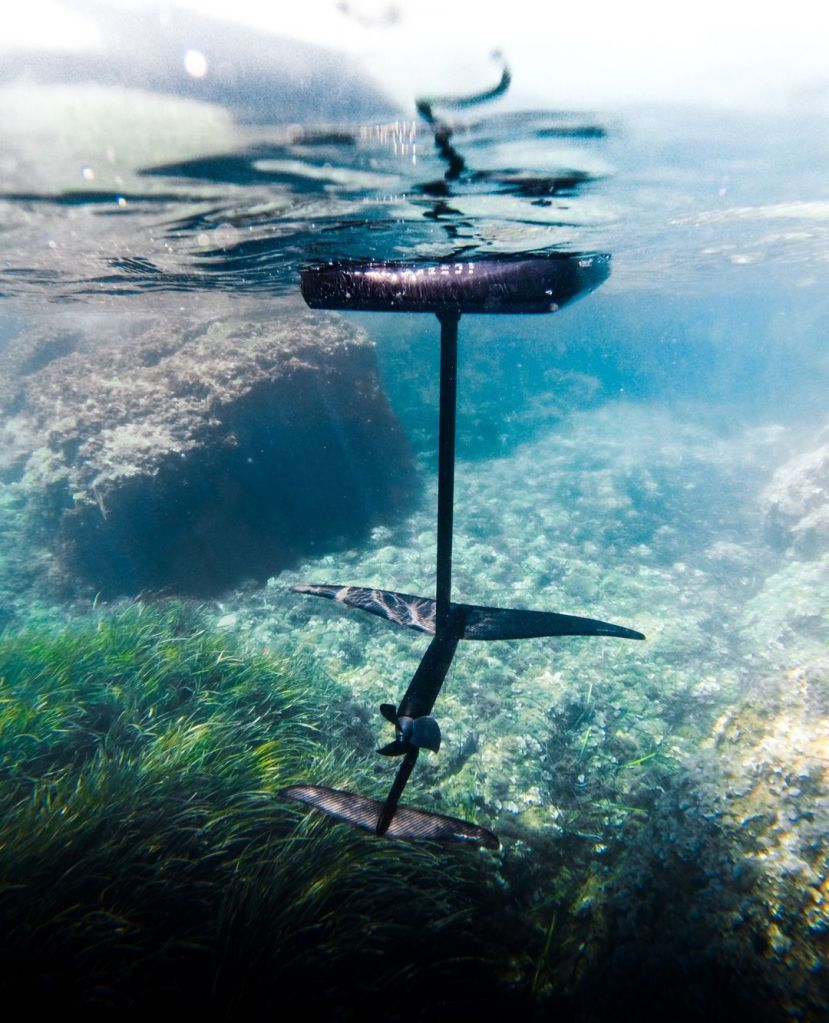Chances are you’ve seen a surfer down at the local beach flying over the water’s surface on what looks like a hoverboard. The electric foil, jokingly dubbed the “jet-ski killer” by David Trewern, CEO and founder of Fliteboard, started as a passion project – now it’s on nearly every superyacht in the world.

Six years ago, Trewern, a former kite-surfing world-record holder, was burnt out and in a position to retire before 50 after already growing two successful businesses.
He promised his wife he would not start another company – a promise that did not last long.
“[Work] never stops, and we needed a break, so we bought this place and moved up to Byron with the family for some timeout,” David says.
“I was sitting there, wondering how I could get out there with zero wind. Imagine riding around on a surfboard without a wave or wind, and I just thought that would be the most incredible thing ever.”
The father of two went into town to purchase a 3D printer, and the family home quickly turned into a workshop.


“I was soldering stuff in the kitchen, we’d go to sleep every night to the hum of the 3D printer, my son even came up with the name Fliteboard,” he recalls as he shows off a small scar on his right thumb that he acquired from testing the first electric propellor in his jacuzzi.
The rest was history. Fliteboard sold more than 9000 boards and generated $56 million in revenue in 2022 alone.
But Trewern does admit his vision for making the boards affordable for everyone simply wasn’t realistic in the initial stages. “I quickly realised that you can’t make it cheap. You’re dealing with expensive materials and high-voltage batteries, and you don’t want to muck around with that,” he explained.

“I was on a yacht in Greece in 2017, and I’d wake up next to these superyachts, and I thought, ‘this is the market’. We’re not trying to sell a product to surfers; they’ve already got their sport, this is like the Tesla of the ocean, so I decided that’s who I was going to target. I want this to be the thing that kills off jet skis.”
The $17,795 entry price point does not appear to have put a dent in sales. The boards are used in 90 countries, and a surge in popularity has Fliteboard forecasting a 50% revenue climb to more than $80 million in 2023.
The company’s global rise has seen offices pop up in Melbourne, Amsterdam, San Francisco, and New York, as well as its Byron Bay headquarters. That includes 100 permanent Fliteboard staff, 150 schools and 330 partners selling the boards worldwide to meet growing demand.
“There’s no other feeling like it in the world. When surfing, you are always waiting and checking the wind conditions,” Fliteboard battery engineer and performance team rider Simon Axmann says.
“On the e-foil, you can go out on the beaches or the lakes whenever or wherever you are, and it feels like the ultimate freedom.”
After making a splash with its Series 3 lineup earlier this year, the Flite team has expanded its portfolio even further by introducing the Flitescooter, complete with removable handlebars for an easier ride.

Issue Six of Forbes Australia is available now at news agencies. For instant access to all stories become a Forbes Australia Member here.



